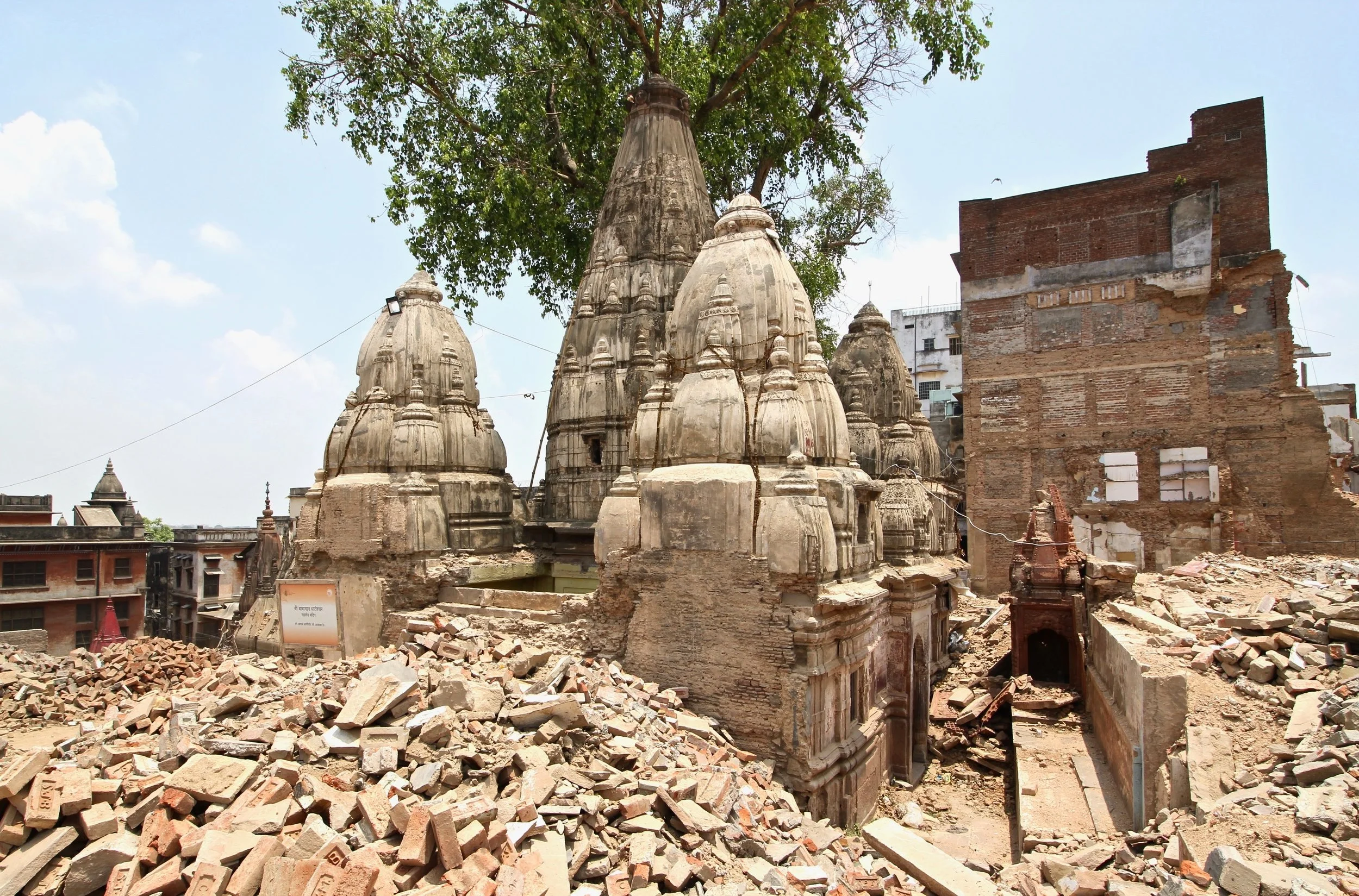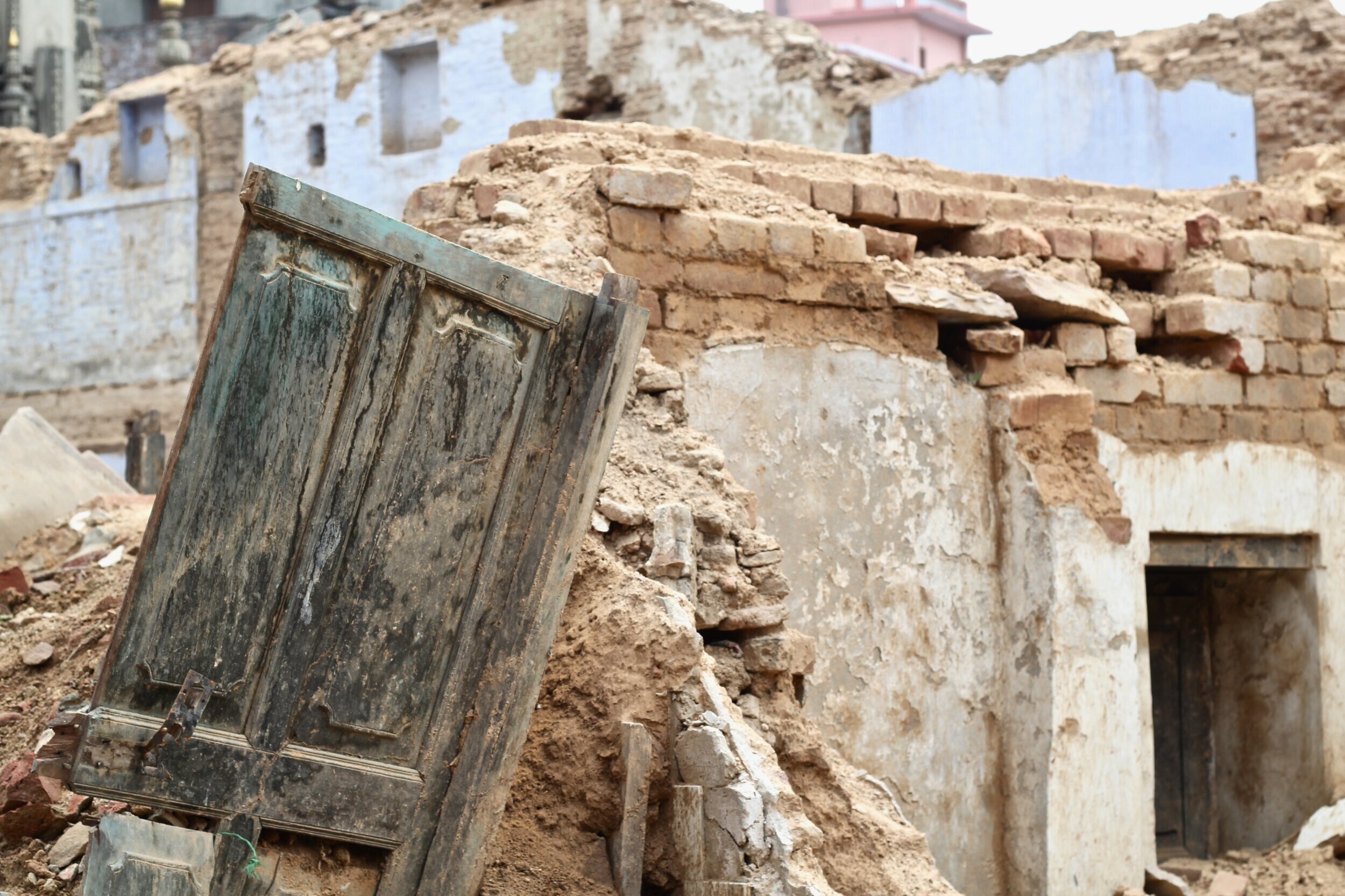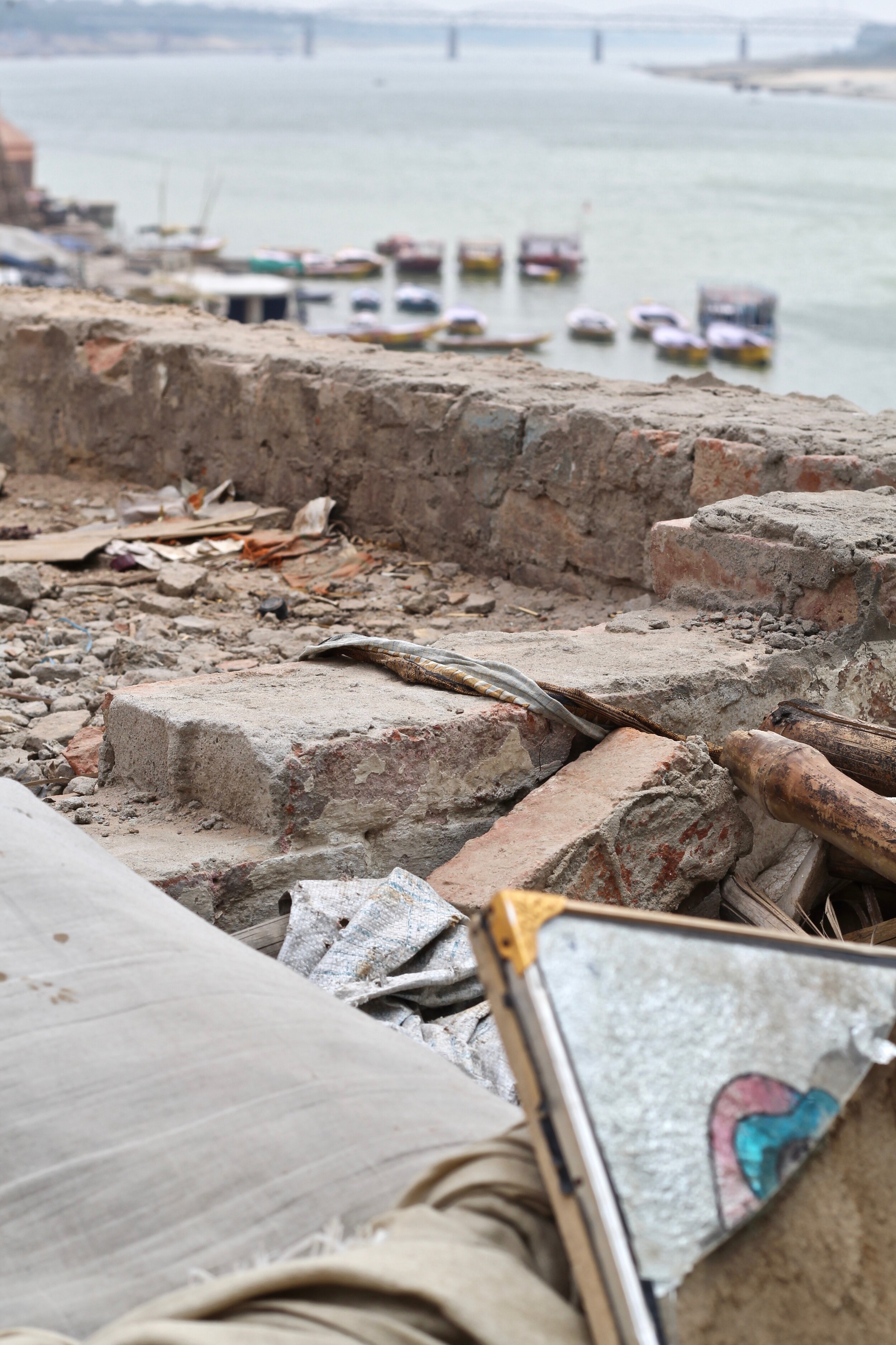Excavating the Vishwanath Corridor in Varanasi, India
“It looks like an earthquake happened here,” I say. “It looks like Iraq. No, like Syria,” says Mohan (not his real name). “Yes, like Syria,” he repeats to himself, as if realizing for the first time the implications of the comparison.
Mohan used to live here, on Varanasi’s waterfront, with his extended family, in one of the many rudimentary flats constructed atop an eighteenth-century fortress nearby. A few months ago, heavy machinery and a small retinue of men armed with hammers and chisels arrived, together with security forces, to break down these buildings. They were here to begin the first phase of the Vishwanath Corridor project—demolition and clearance. As we are picking our way across mounds of brick rubble, the hot midday sun bears down on us. “At first we resisted…” he says, not finishing his sentence.
I met Mohan on the ghat nearby (these are huge stone platforms, like steps, that run the length of the city along the Ganges river). He works as a kind of informal guide, showing Western tourists around the cremations that take place along the banks of the river here, hawking boat trips, that sort of thing. He’s in his early twenties and travels everyday now from the city’s outskirts where his family has been resettled. His father no longer works, and the family depends on his and his brother’s incomes.
“Did you get any compensation from the government?” I ask. He shrugs and says “We were renters.” “Where do you live now?” “It’s far,” he answers, “it takes time to get here now,” and gestures towards the city’s northern flank, where its poorest populations live.
As we walk, he points out to me what has been destroyed. A chai stall he favored, an old doorway, and a charity rest house for those who came to the city to die (many Hindus believe that to die in Varanasi is to be released from the cycle of rebirth). “Watch yourself,” he says, as he calls up to a teenage boy throwing bricks down from a rooftop nearby to let him know we are passing. The practices of demolition are ongoing here, imbued into new patterns of walking through a neighborhood of what used to be.
The Vishwanath Corridor is the pet project of India’s Prime Minister and local Member of Parliament, Narendra Modi, and is taking place under the leadership of Uttar Pradesh’s Hindu nationalist state government. The idea, at least as articulated in the Indian press, is to open up the congested urban fabric around the city’s most important Hindu temple—the Kashi Vishwanath temple (built in 1780)—to allow for easier access for the thousands of pilgrims who come here every day. It has also displaced hundreds of people from diverse caste, ethnic, and religious backgrounds as home and businesses are razed to the ground. The Vishwanath Corridor is an attempt to reorder the relationship between religion and modernity in this city.[1] Varanasi is an old place, with plenty of small alleyways, crowds, old buildings, and unplanned development. Many accounts of the project in the Indian press equate the corridor with cleanliness, order, administrative transparency, and new forms of technology and infrastructure. The press also characterizes this investment in specifically Hindu space as something new, or rather, as something not seen in India for hundreds of years. This is supposed to be a double rehabilitation—of mixed-use and domestic space as exclusively religious, and of Hindu space as paradigmatically modern.
There is plenty one could say about the politics of religion in India at this particular moment, under the Bharatiya Janata Party (BJP) that has stormed back into power after recent elections, and plenty more to say about the ways that Varanasi is being used by politicians, in particular, as a symbol of Hindu civilizational revitalization. The latter, at least, is obvious to even casual observers of what is happening in this city.
“In the city of Varanasi—the city most closely associated with the Hindu god Shiva—a handful of men have displaced the divine and now decide what is to be destroyed and how this city is to be reborn. ”
What this photo essay seeks to do is to think through the practices of excavation and displacement as a strategy for combining aspects of the city’s past with a particular vision of its future. I’ve been particularly interested in the notion being peddled in the press by Hindu-right commentators that such destruction is the first step to a Hindu revival, and that Varanasi is the natural place for such work to take place because it is the city most closely associated with the god Shiva, himself a destroyer and re-creator of the great Hindu cosmic cycle. To destroy, in other words, is an inherently creative act. Though here it might be pointed out that such thinking usurps the divine and places humans (rather, men) into the role of Hinduism’s most powerful god. In Varanasi a handful of men have displaced the divine, and now decide what is to be destroyed and how this city is to be reborn.
I disagree with the very premise behind the Corridor. The destruction of Varanasi’s urban fabric is the outcome of a highly selective memory, and a highly selective history, both of which ignore what makes this city the place that it is. The Vishwanath Corridor is a misreading of what Varanasi is for most of those people who live here. The city is not a symbol, or a tool for political gain, but rather it is home. It is a set of socio-economic relationships woven into and among its myriad of structures—buildings that are valued by those who make their lives here. In this respect, Varanasi is not all that different from the other cities of northern India. It has many of the same problems as a place like Kanpur, for example, but it also inspires the same sort of partisanship and longings that most people’s hometowns might.
The British colonial state for centuries attempted to co-opt Varanasi into its projects of civilizational regeneration; to make it exceptional in the realm of urban India. If only Christianity would take hold here, they said, then all of India would be next. If only the people of Varanasi accepted Western knowledge as intrinsically superior, they said, then all of India would fall into line behind Europe. If only this, if only… Now a new government seeks to make Varanasi a precedent for change and a symbol of the country’s future by co-opting the city’s past. The question is whether Varanasi will survive it.
NOTE
[1] A. Srivathsan, “Varanasi, By Design: Vishwanath Dham and the Politics of Change,” The Hindu, March 23, 2019.

























